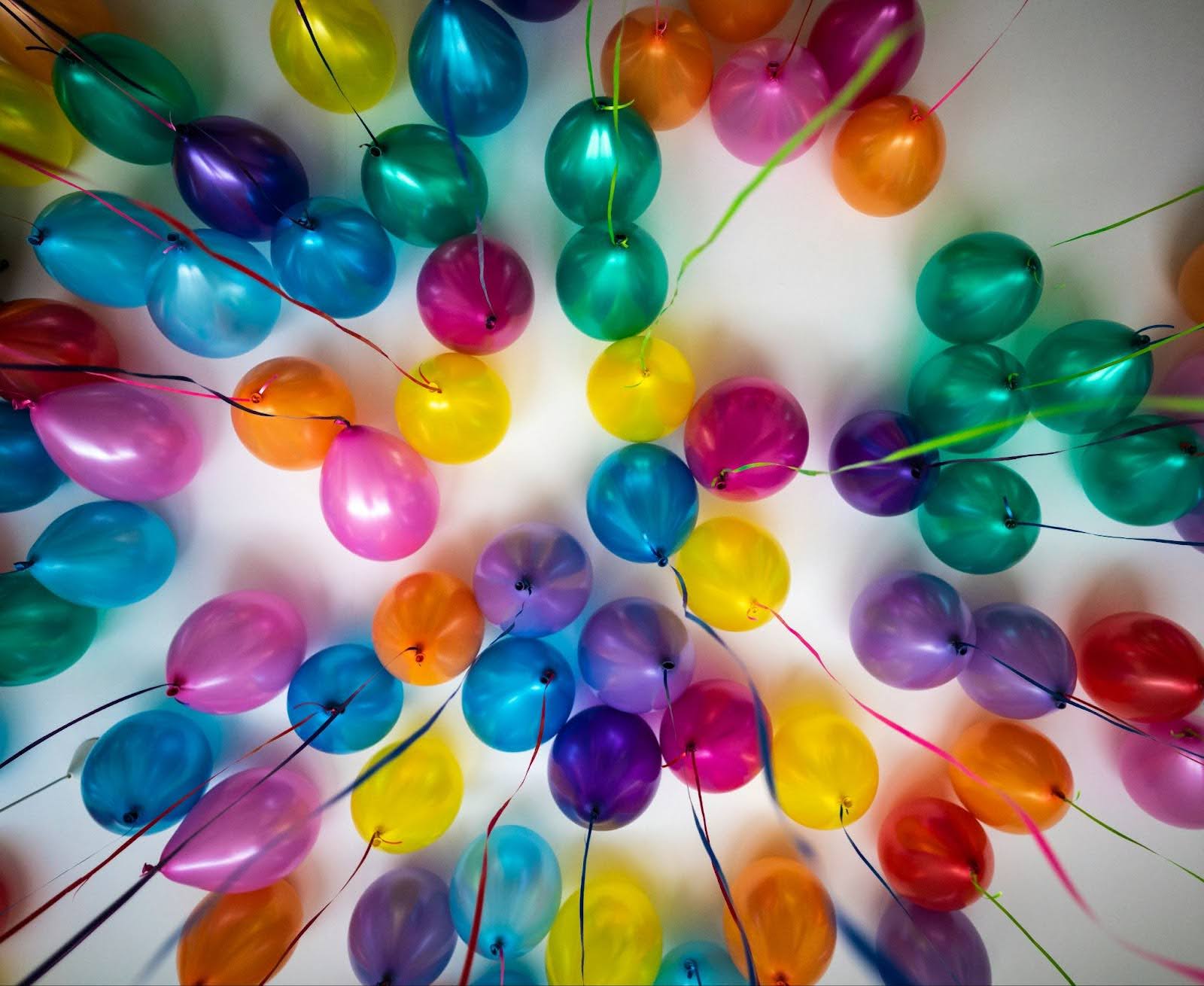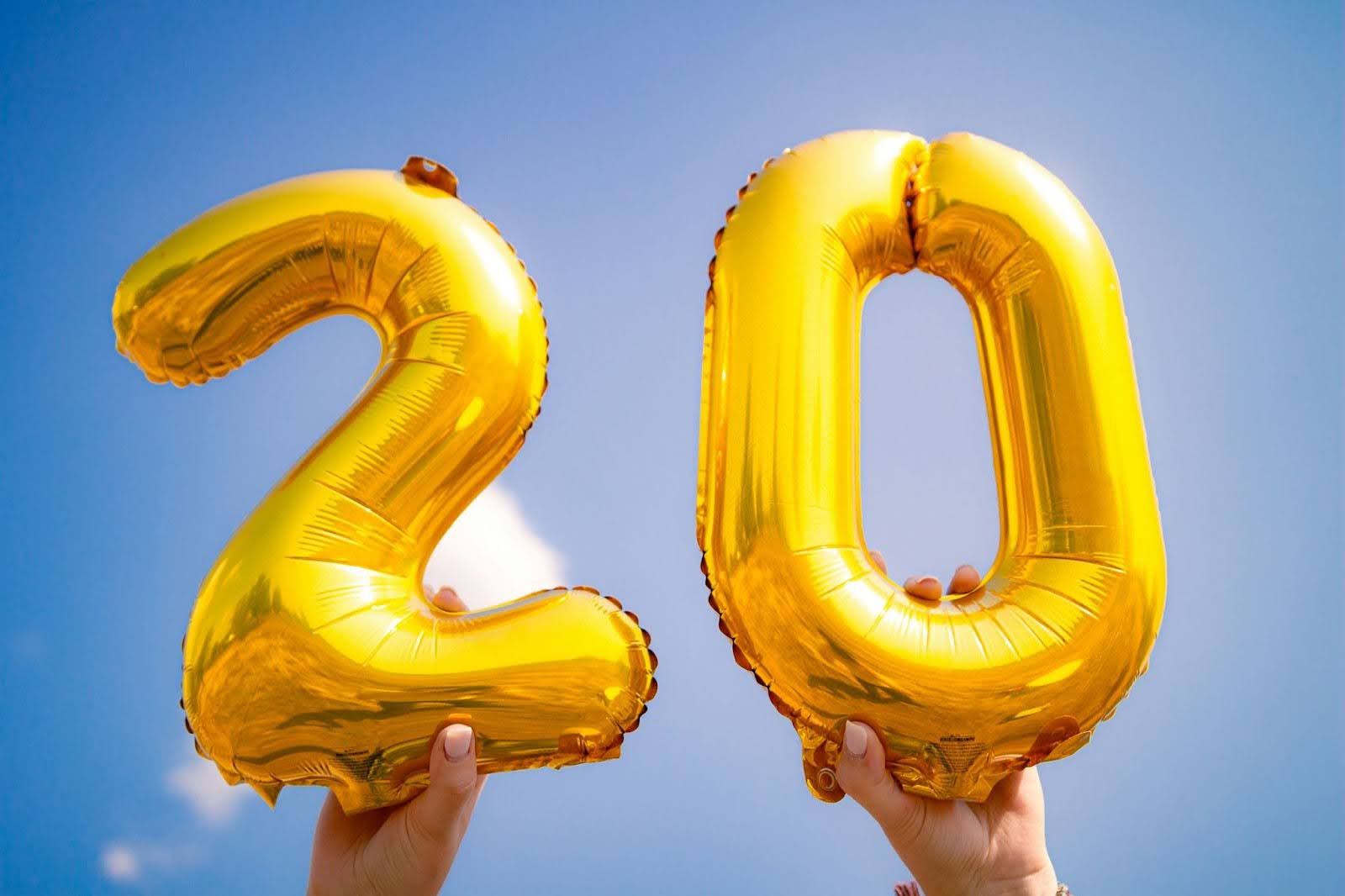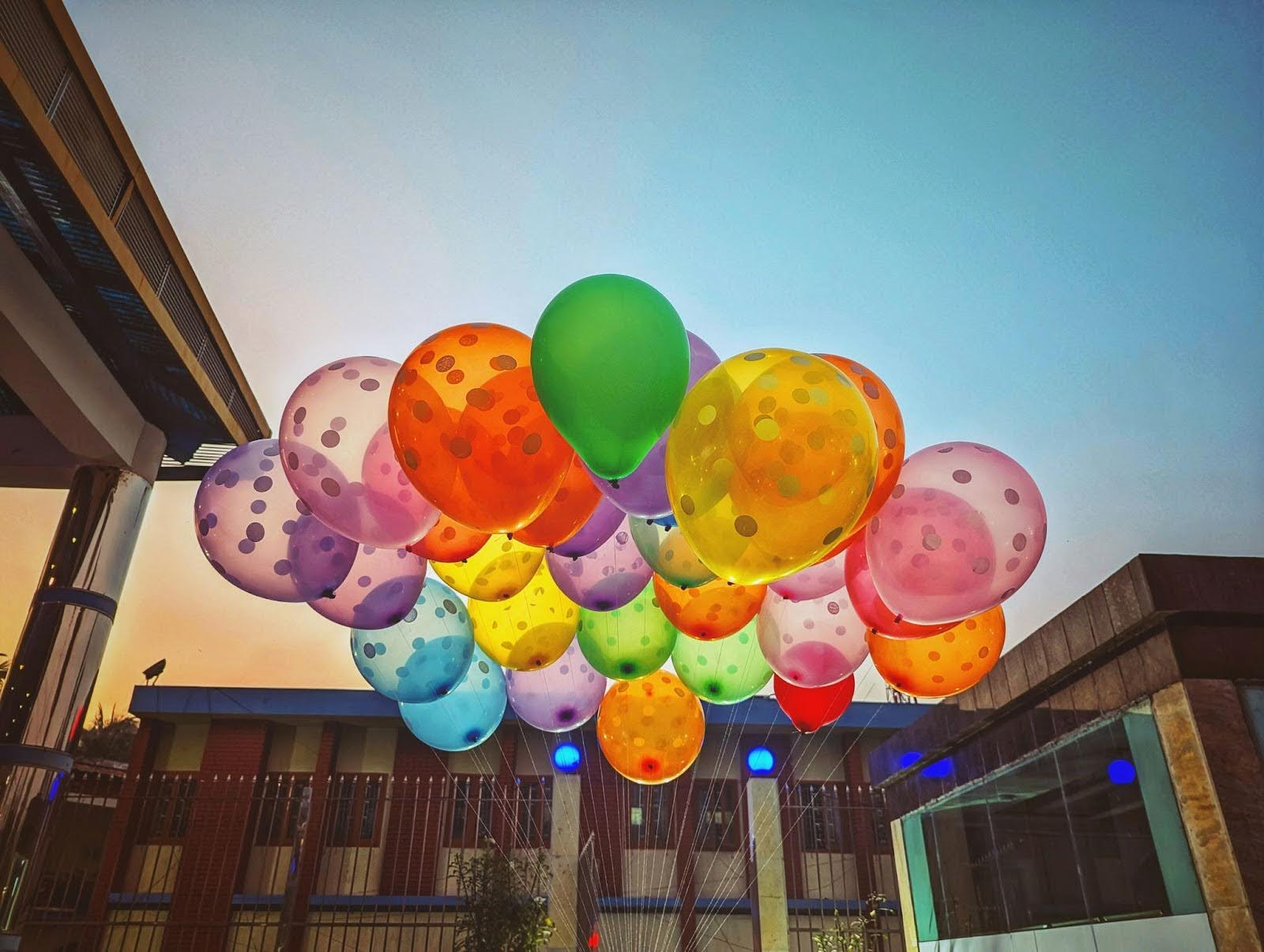
Planning a party in Singapore? Balloons are a must, but do you know what they are made of? This guide gets straight to the point, explaining the common materials like natural latex and foil.
We cover how they’re made and what makes them different in terms of durability, appearance, and environmental impact. Understanding these basics will help you choose the best balloons for your child’s birthday or any family celebration, ensuring your event is both beautiful and well-planned. Let’s dive in.
When you buy balloons, you are typically choosing between two main types of balloon materials: latex and foil. Each comes from a different source and has unique properties that make it suitable for different situations. A smaller, third category of speciality plastic balloons is also popular for specific designs. Understanding these materials is the first step to planning your party decorations.
1. Natural Latex: The Classic Choice
The most common type of balloon is made from natural latex. This is the traditional, stretchy balloon that most of us remember from childhood parties.
What is Latex?
Latex is a natural, plant-based substance. It is the milky sap harvested from the rubber tree, Hevea brasiliensis. This harvesting process, known as tapping, is similar to how maple syrup is collected and does not harm the tree. Because it comes from a plant, natural latex is a renewable resource and biodegradable.
How Are Latex Balloons Made?
The manufacturing process is quite straightforward:
- Compounding: The raw liquid latex is mixed with pigments to create different colours. Small amounts of additives are also included to improve the balloon’s elasticity and strength.
- Dipping: Metal moulds in the shape of a balloon are dipped into the prepared latex mixture.
- Curing: The latex-coated moulds are then heated in an oven. This process, called vulcanisation, cures the rubber, making it strong, stable, and stretchy.
- Finishing: Once cured, the balloons are rolled off the moulds and washed to remove any residue. They are then tested for quality before being packaged.
Properties of Latex Balloons
- Elasticity: Their main feature is their ability to stretch significantly.
- Porosity: Latex is a porous material, meaning it has microscopic holes. This is why helium-filled latex balloons gradually deflate over 8-12 hours as the small helium atoms escape.
- Biodegradability: As a natural product, latex balloons biodegrade at roughly the same rate as an oak leaf, making them a more environmentally friendly choice when disposed of correctly.
2. Foil (Mylar): The Shiny Showstopper
Foil balloons are known for their bright, metallic shine and their ability to be shaped into letters, numbers, and popular characters.
What is Mylar?
Despite being called “foil” balloons, they are not made of metal. The material is a type of plastic film called BoPET (Biaxially-oriented polyethylene terephthalate), for which Mylar is a popular brand name. This plastic sheet is coated with a very thin layer of aluminium to give it its reflective, metallic finish.
How Are Foil Balloons Made?
The process involves a few key steps:
- Printing & Coating: Sheets of nylon plastic are printed with designs and then coated with a layer of aluminium.
- Cutting & Sealing: Two of these printed sheets are cut into the desired shape (e.g., a star, a number ‘5’, or a cartoon character). They are then placed together and heat-sealed around the edges.
- Valve Insertion: A small, self-sealing valve is inserted into the balloon before the final seal is made, which is where it will be inflated.
Properties of Foil Balloons
- Durability: Foil balloons are much less porous than latex, so they hold helium for a very long time – often for days or even weeks.
- Appearance: The Mylar material allows for sharp, detailed printing and can be made into a wide variety of complex shapes.
- Reusability: Many foil balloons can be carefully deflated and stored for reuse, offering excellent value.
3. Speciality Plastics: For Clear and Bubble Balloons
You may have seen those perfectly round, crystal-clear balloons, often filled with confetti or smaller balloons. These are known as “bubble balloons.”
What Are They Made Of?
These balloons are made from a stretchy, durable plastic like polyurethane. This material is different from both latex and Mylar, designed to be highly elastic and resilient.
Properties of Bubble Balloons
- Clarity & Shape: They are exceptionally clear and inflate into a perfect sphere.
- Long-lasting: Like foil, this plastic is not porous, so these balloons have a very long float time.
- Non-allergenic: For individuals with a latex allergy, these plastic balloons are a safe and beautiful alternative.
Latex vs. Foil Balloons: Which Is Right for Your Party?
Now that you know what they are made of, choosing between latex and foil is easier. For busy parents in Singapore, the right choice depends on your event, budget, and desired look.
When it comes to durability and how long they will last, foil balloons have a clear advantage. Latex is a porous natural material, so helium-filled latex balloons will typically only float for about 8 to 12 hours.
Foil balloons, made from a non-porous plastic film, hold helium much more effectively and can stay afloat for a week or even longer. This makes them ideal for multi-day events or if you want to prepare decorations a day in advance.
In terms of appearance, the two types offer very different aesthetics. Latex balloons give you that classic, teardrop shape and come in a vast range of solid colours, from matte to metallic. You can also choose many colour options for them. They are perfect for creating volume with balloon arches, columns, and large bunches.
Foil balloons, however, are the stars of themed parties. Their Mylar surface allows for sharp, detailed, full-colour printing, making them perfect for character designs, numbers, and letters that serve as a centrepiece for your celebration.
Cost and environmental impact are also important factors. Latex balloons are generally more affordable per piece, making them a budget-friendly choice for decorating a large space. As a natural product, they are also biodegradable.
Foil balloons have a higher price point per balloon, but their reusability can offer better long-term value. While they are not biodegradable, they can often be deflated and reinflated for future parties, reducing waste.
Important Considerations for Parents in Singapore
Beyond the material, there are a couple of key points to keep in mind to ensure your celebration is safe and responsible.
Balloon Safety and Allergies
A primary concern for parents is safety. With any balloon, it is important to supervise young children, as deflated or popped pieces can be a choking hazard.
Additionally, some people have a latex allergy. While rare, it is something to be aware of. If you know one of your guests has an allergy, foil or plastic bubble balloons are the safest option.
Environmental Impact and Responsible Disposal
In Singapore, where we are all conscious of our environment, responsible disposal is key.
- Latex Balloons: Although biodegradable, they should still be disposed of properly in a bin.
- Foil Balloons: These are not biodegradable. However, their ability to be reused makes them a sustainable option if cared for.
- No Balloon Releases: Never release balloons into the sky. They can travel long distances, harm wildlife, and become litter. In Singapore, foil balloons also pose a risk if they get tangled in power lines due to their metallic coating.
The best practice is always “Pin It and Bin It.” Once the party is over, pop the balloons and place them in the rubbish bin.
Conclusion On What Balloons Are Made Of
Choosing the right balloon comes down to understanding the materials. Natural latex offers a classic, biodegradable option perfect for creating vibrant, large-scale decorations. Foil (Mylar) balloons provide durability and sharp, customisable graphics ideal for making a statement.
By knowing the difference, you can select the perfect balloons to match your party’s theme, duration, and budget. At BearloonSG, we provide a wide selection of both, ensuring every celebration is a memorable one. Think of us as a bespoke salon for your party needs, crafting the perfect atmosphere just for you.
At BearloonSG, we believe every celebration deserves a touch of wonder. Understanding what balloons are made of helps you craft those perfect moments. From vibrant latex arches to personalised foil centrepieces, we use our expertise to bring your vision to life. Let us handle the details with our free customisation and free, fast delivery across Singapore, so you can focus on making memories.
Still have questions or need help planning your next event? Feel free to contact us. We’re happy to help you create a celebration that will be remembered long after the balloons have floated away.
Frequently Asked Questions About What Balloons Are Made Of
What are the 3 main types of balloons?
The three most common types of balloons you’ll find for parties are latex, foil (Mylar), and bubble balloons. Latex balloons are the traditional, stretchy rubber balloons. Foil balloons are the shiny, often character-shaped ones. Bubble balloons are made from a clear, stretchy plastic and are known for being perfectly round and very durable.
Is a normal balloon made of plastic or rubber?
A normal, standard party balloon is made of rubber, specifically natural rubber latex. This material is harvested from the sap of rubber trees, making it a plant-based product. Foil balloons, on the other hand, are made from a type of plastic film coated with aluminium.
Are latex balloons harmful to the environment?
Latex balloons are made from natural rubber and are biodegradable. They break down over time at a rate similar to that of a leaf. However, it is still crucial to dispose of them properly (“Pin It and Bin It”) and never release them into the air, as they can still pose a risk to wildlife before they fully decompose.
What are transparent bubble balloons made of?
Those crystal-clear, perfectly spherical balloons are typically made from a special stretchy plastic like polyurethane. This material is very durable, less porous than latex (so they stay inflated longer), and is not known to cause latex allergies, making them a popular choice for high-end decorations.
How long do different types of balloons last?
The lifespan of a balloon depends on its material and what it’s filled with. A standard helium-filled latex balloon typically floats for about 8-12 hours. A helium-filled foil (Mylar) balloon can last for several days or even weeks. Air-filled balloons, regardless of material, can last for a very long time as air molecules are larger and escape more slowly.
Can I customise both latex and foil balloons?
Yes, both types can be customised, but in different ways. Latex balloons are great for printing simple text or logos. Foil balloons are better for complex, full-colour designs, images, and personalised messages, which is why they are often used for specific themes and occasions. At BearloonSG, we offer free customisation to make your balloons unique.


